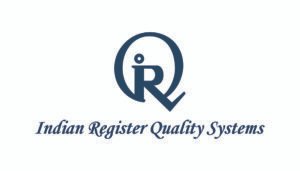Tag: Is ISO 27001 the same as ISO/IEC 27001?

How To Implement International Standards Of Information Security In Your Business?
A reliable information security program is a critical component for all businesses in the digital age. With evolving times, the rate of data breaches and security incidents are amplifying exponentially. An organization without a security program can face prominent threats to customers and data. Know the vital aspects related to an information security program. Find a step-by-step guide to implement it at your organization. ISO 27001 is the globally-accepted standard for information security management systems or ISMS. ISO 27001 framework defines the critical requirements for ISMS. The global standardization framework provides the ideal techniques for companies of any size and belonging to all sectors. Find optimal solutions for establishing, implementing, maintaining, and continually enhancing the ISMS or information security management system in the organization. ISO compliance – Complying with the standards of ISO 27001 exhibits that an organization or business has established a reliable information management system for risks related to data security. The data could be owned or handled by the company. The robust system must follow the best practices and principles, adhering to the ISO standards and norms. The ISMS or information security programs must tick the following criteria – Essentiality of information security – ISO 27001 Undoubtedly, the increasing rate of cybercrime is alarming! The constant emergence of new threats makes it challenging for organizations. It may appear impossible to tackle and manage the cyber risks. With ISO 27001, all organizations can become risk-aware. The framework helps a company become aware and proactive in the process of identifying and addressing its shortcomings. ISO 27001 promotes a comprehensive solution with a holistic approach to information security. Steps to implement ISMS – Information security management system Step 1 – Develop an Information Security Team The first step in the information security program is to make a critical decision about team development. The executive team necessitates senior-level associates for defining the mission and goals of the security program. They are also responsible for developing the security policies, risk management techniques, and more. Apart from the senior executives, there must be executives for daily security operations. Step 2 – Inventory and asset management The first task of the security team is to recognize the essential assets and their status. Note the details of the assets and their location. With lucid information, it gets easy to secure them properly. One can streamline the process with sensitive data, from hardware and devices. Obtain clear information on the databases, shared folders, and more. With a ready list of assets, assign the responsibilities and ensure systematic management. Step 3 – Risk evaluation and analysis While assessing the risks and analyzing the existing risk management plan, you consider the threats and vulnerabilities. Enlist the potential threats to the organization’s assets for a systematic overview. Rate the potential threats based on their impact. Review the vulnerabilities within the organization, and categorize and rank them on potential impact. Step 4 – Risk management Ranking and categorizing the risks is a vital stage for the ISMS implementation. After ranking the risks, decide if you want to reduce, shift, accept, or ignore any of the risks. Step 5 – Develop an incident management plan and disaster recovery strategy Without a robust Incident Management and Disaster Recovery Plan, an organization can never mitigate the risks. It is an essential part and every company must prepare for security incidents or natural disasters. It may be power outages, IT system crashes, cyber hacking, supply chain issues, and even a pandemic, like the recent one! A robust plan identifies the incidents and defines the best actions for data recovery and IT system management. Step 6 – Inventory and third-party management Enlist the vendors, suppliers, and third parties with access to the organization’s data or systems. Prioritize the list depending on the data sensitivity. Once identified, review the best security measures related to the high-risk third parties and mandate the essential controls. Ensure the best monitoring and optimal maintenance with an updated list of all third-party vendors. Step 7 – Apply Security Controls After risk identification, it is essential to define the measures. These risk controls help mitigate or eliminate the possibilities of risks. It could be technical as well, including – encryption, intrusion detection software applications, antivirus applications, firewalls, etc. It can be non-technical including risk management policies, procedures, etc. Step 8 – Security awareness and training One of the most essential parts is to conduct frequent security awareness training. Why? Because it helps share critical information about the security plan. It also revises and reminds the responsibilities of every employee. The evolved security measures and policies become effective only when the employees working with the data are aware of the new norms for risk mitigation and management. Any time the security program receives an update, inform the employees with awareness training to ensure the best operational solution in the long run. Step 9 – Audit the system Ensure the effectiveness of your information security program with the assistance of a third-party auditor. They offer an unbiased report with their end-to-end assessment solution. Recognize the security gaps and confirm compliance. Obtain accurate reports on vulnerability assessments, developing a robust ISMS. Stay informed to make the best choice. Now you know the critical aspects that matter significantly for ISMS development and implementation. Find the most efficient team of auditors with IRQS for ensuring end-to-end solutions for ISO internal audit. Make the best selection by staying informed about the essentials.

ISO 27001 Certification: What it is and Why Your Business Needs it?
Ensuring the security of the sensitive information is a priority for every organization. With growing time, hackers are becoming smarter with the new-age technology. The ever-evolving techniques of data breaches are increasing the chances of cyber-attacks. The ability to access sensitive data in the organization makes it a critical concern. As a result, the focus on safeguarding information has increased. Information security management needs a systematic approach and the ISO 27001 has helped organizations find the best solutions. An effective solution with ISO framework – The functionality and effectiveness of an organization relies on the implementation process of the ISO framework. It needs to be monitored and controlled. Organizations need to follow a long-term approach. It is not ideal to only introduce the security controls suitable for specific IT areas. In fact, it must also focus on other non-IT assets. The threats on the non-IT assets are also critical and need the best management solution. The globally acknowledged norms in the ISO 27001 standard offer a comprehensive solution. Achieving and maintaining the ISO 27001 certification exhibits adherence to the best practices, reflecting a reliable brand image. The stakeholders and clients can stay stress-free about the best practices followed by the organization to strengthen the information security management system. Understand the ISO 27001 compliance ISO is an independent international body that operates with knowledgeable experts to promote standardization and best practices for various organizational aspects. Government agencies, private organizations, and other professional bodies implement and follow the ISO standards. It offers an effective solution to evaluate the performance of the company against its global competitors. Certification with ISO reflects a commitment to process quality, responsible practices, and elevated security measures. ISO 27001 defines a set of requirements, considerations, and criteria for the ISMS controls implemented at an organization. Compliance depends on the risk management policies and strategies followed by the company’s IT systems and data management system. The need for the certification ISO 27001 certification is not a categoric solution, isolated to a selective field. In fact, there are several organizations across diverse industries following the prime standards of security. Prominent industries focusing on the ISO 27001 framework for ISMS, include – IT, finance, telecom, healthcare, and government. The objective of ISO 27001 is to ensure optimal security for the clients. Obtaining the ISO 27001 certification helps an organization prove its security measures to potential customers across the globe. With the best practices for developing an efficient and effective ISMS, accomplishing the following is essential – The ISMS is a set of governance policies. It defines what has to be secured and by whom. It also defines the techniques for optimal effectiveness and efficiency. ISMS must match the enterprise goals and operational necessities including data usability and budget. Benefits at a glance – The prominent benefit of ISO 27001 is the development of a verified ISMS in an organization. It helps you implement and update your information security. In the long run, it develops an efficient brand image for the organization to your stakeholders and customers. a) ISO 27001 is also vital to attract the attention of potential clients. The process of getting certified to an internationally-acknowledged system like ISO 27001 sets the standards high. b) Recognize and act responsibly to manage the risks of cyber threats. Identify the importance of data safety and protect critical information from third parties. This way, tighten the information security norms in the organization. Tackle the risks proactively with ISO 27001. c) With ISO 27001 certification, exhibit the best practices for ISMS and prove it to your customers. The framework helps you maintain the integrity of your organization’s data. Why is it the apt choice? Meets the customer demands for high levels of technical and cybersecurity standards with the ISO framework. Educate your team to improve their technical skills and tighten the cyber security practices. Become eligible for large-scale projects and tenders with a robust ISMS. Summing up the benefits Make the best choice. Connect to IRQS for audit service with a team of experienced auditors. Make a wise choice for your organization by implementing the best steps for ISMS development. Get certified with ISO 27001 for enhancing business prospects.
Search
Useful Links
Recent Posts

Achieving SOC 2 Compliance: Ensuring Trust in Data Security

Understanding ISO 50000 for Energy Management: Unlocking Efficiency



